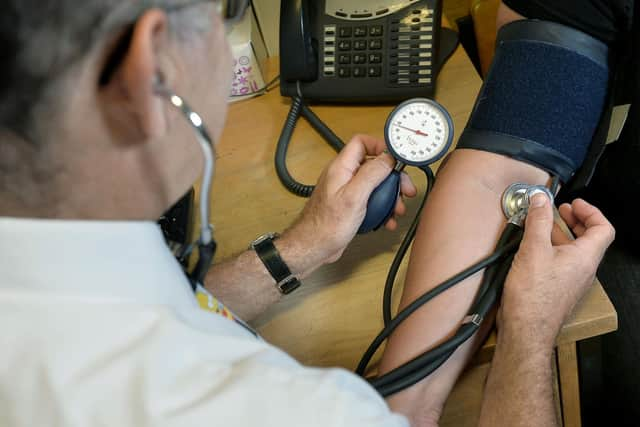There was no hoped-for increase in Wigan GP numbers last year
and live on Freeview channel 276
But at least that bucked a trend as England as a whole saw the biggest year-on-year fall in over three years in fully qualified general practitioners, despite the Government's 2019 manifesto pledge to recruit 6,000 more of them by 2025.
The British Medical Association trade union said the continued decline in fully trained GPs – which means there are now more than 1,900 full-time equivalent fewer doctors than in 2015 – is "alarming", and urged the Government to take the situation seriously.


Advertisement
Hide AdAdvertisement
Hide AdNHS Digital figures show there were 214 full-time equivalent GPs in the former NHS Wigan Borough CCG area in November.
But of these, 55 were in training, meaning just 160 were fully qualified – the same as a year earlier.
Nationally, there were 27,400 fully trained GPs in November – down from 27,900 in November 2021 and a decrease of 1.7 per cent, the largest annual fall in more than three years.
The BMA said the "haemorrhage of GPs from practices in England is alarming".
Advertisement
Hide AdAdvertisement
Hide AdDr Kieran Sharrock, GP committee acting chair at BMA England, said: "Despite promises to recruit 5,000 – and then 6,000 – more GPs, the Government has now overseen the loss of the equivalent of more than 1,900 full-time fully qualified GPs in England since 2015.
"That almost a quarter of this loss happened in the last 12 months alone speaks volumes to the intense pressures that practices and staff are under."
Dr Sharrock said many GPs are having to take difficult decisions to reduce their hours or leave the profession altogether to protect their wellbeing as workload demands and financial stresses mount.
"Rather than piling on more pressure, the Government needs to show it is taking this dire workforce situation seriously and encourage more family doctors to stay in the profession when our communities need them most," added Dr Sharrock.
Advertisement
Hide AdAdvertisement
Hide AdThe total number of full-time equivalent GPs across the country rose by 1.2 per cent from 36,200 to 36,600 in the 12 months to November.
This was largely driven by a 10.8 per cent rise in training GPs, from 8,300 to 9,200.
In Wigan, the number of GPs in the training grade fell from 58 to 55.
The Department for Health and Social Care said it is "incredibly grateful" to GPs for their hard work.
Advertisement
Hide AdAdvertisement
Hide AdA spokesperson said at least £1.5bn will be invested to create an additional 50 million appointments by 2024.
"There were nearly 2,300 more doctors working in general practice in September compared to September 2019 and a record-breaking number started training as GPs last year," they added.
This figure includes GPs in training, and the latest data shows the total number of GPs fell by almost 400 from September to November.
The situation is not helped by the fact that almost two-thirds of trainee GPs plan to work part-time just a year after they qualify because being a family doctor is so stressful, research last year showed.
Advertisement
Hide AdAdvertisement
Hide AdTheir intention to work two-and-a-half or three days a week only exacerbates the NHS’s already acute shortage of GPs and make it even harder for patients to get an appointment.
